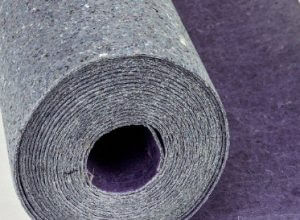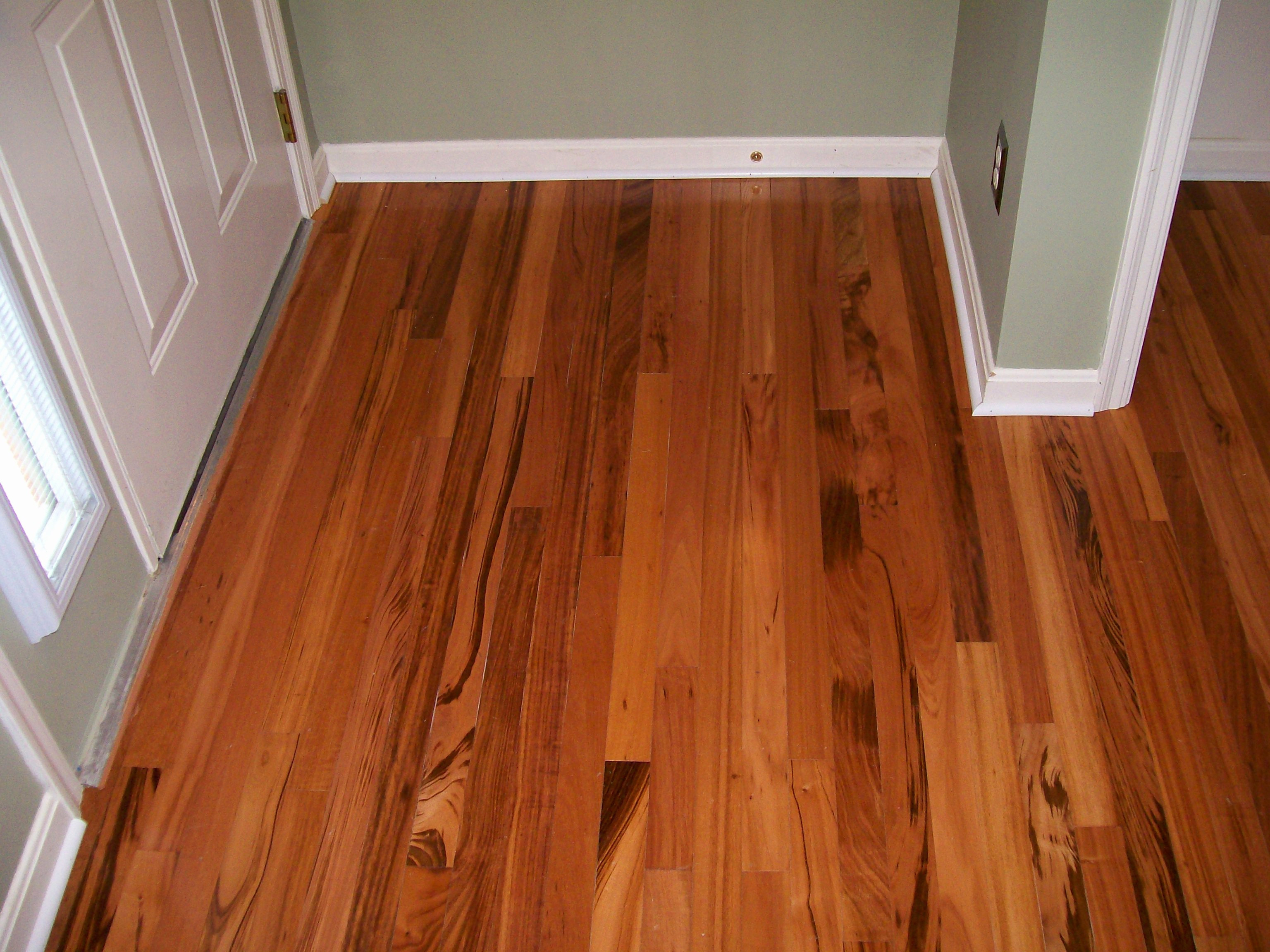Per the manufacturer, the floor underlayment pad meets or exceeds all known standards for moisture protection, impact strength, resistance to UV radiation, and durability. It’s easy to install; simply roll it out and tape it down. Bellawood Underlayment Bellawood Premium Underlayment – 100 square feet per roll The Bellawood Premium Underlayment offers a universal product usage. It's great for all floating. Bellawood Premium Underlayment is a unique, earth-friendly, insulating underlayment used under laminate, nail down and glued down wood floors.
The main purpose of the flooring underlayment is to allow your floating floor to shrink expand as the room temperature and humidity changes. Floating floors are not permanently attached to your subfloor, and to help avoid damaging friction you need underlayment, which will give your floor smooth surface to float on.
Standard Foam Underlayment is the most common type of flooring padding. It is suitable for laminate wood flooring, engineered wood hardwood floor and /or any other type of floating floor.
This underlayment is simply a thin foam padding, about 1/8″ thick. Made out of polyethylene or polypropylene it usually comes in rolls. The size of the roll ranges anywhere from 100 to 1,500 square feet.
Standard underlayment provides very basic sound reduction, thermal R-value and sub-floor correction.
Where To Use It?
In general, flooring underlayment gets laid down over the subfloor before installing the floating floor. Standard foam underlayment is suitable for installation over wood, plywood, OSB subfloor, and other places where there is no possibility of moisture coming up from the subfloor.
Note: if you need protection against the moisture from your subfloor, Standard Foam Underlayment cannot be used, or can be used in combination with thicker plastic moisture barrier film. This is important because installation of a wrong type of underlayment may void your flooring warranty, and lead to problems with the flooring.
Are You Ready? Let’s Get Started.
In this illustrated guide we will walk you step-by-step and show you how to install standard foam underlayment fearlessly.
Before you start installation, prepare your supplies and all the tools. Good organization is key to success. Make sure to have everything ready beforehand in order to remain uninterrupted during installation. Additionally familiarize yourself with the tips for successful laminate flooring installation.
Supply List:
- Standard Foam Underlayment
- Flooring
- Broom
- Hammer
- Nails and screws
- Screwdriver
- Tape measure
- Sticky Tape
- Scissors
- Utility Knife
Step 1: Remove
Your very first step should be to remove your existing floor that is currently covering your room; this will include removal of the carpet as well as carpet padding. Carpet padding is too thick and cannot be used as an underlayment for floating types of flooring. We are getting a lot of questions about removal of the linoleum or commercial carpets. You can keep them as long as the manufacturer of your floor allows it, and they are even and flat.
You will also need to remove any existing quarter round molding as well as wall base prior to the installation
Step 2: Clean Your Subfloor
The surface of the subfloor must be clean. Using your broom or vacuum cleaner, clean your subfloor from all loose debris and dirt before moving forward with the foam underlayment installation.
Step 3: Inspect Your Sub-Floor
After your subfloor is nice and clean it is time for an inspection. It is a very important task that’s very often neglected. Make sure to carefully inspect your subfloor and make sure it’s flat, in good repair, and dry.
Step 4: Fix Your Subfloor
If you noticed any issues with your subfloor, take time to address it before moving forward. Your subfloor MUST be FLAT. Period! To fix uneven subfloors, nail down all sticking out nails, repair or replace damaged wood subfloor and fill excessive gaps in the subfloor. Your subfloor plays a very important role in supporting your floor, so make sure to address all the issues now.
Keep few tips in mind before moving forward with the installation:
- Your subfloor must be flat
- Your subfloor must be dry – maximum acceptable moisture reading for wood subfloors is 14%
- Creaking areas must be repaired before installation
- If your subfloor sags, inspect the joints below for twists or weaknesses
- Capped or uneven areas on joints may be related to moisture damage
- Low areas must be replaced or filled with leveling formula
- Picked joints must be sanded
- Any sticking nails or screws must be removed or fixed
Step 5: Let’s Get Rolling
Standard Foam Underlayment comes in rolls that range from 100 to 1,500 square feet. Don’t lay out all of the underlayment at once. All you need to do is just unroll one row of the standard flooring underlayment at the moment to keep your work area nice and clean.
Step 6: Work Left to Right
Work from left to right. Butt it against your wall. Lay your floor padding in the direction you will be installing flooring planks.
Step 7: Tape Rows
Secure rows by taping them together, this will keep your underlayment in place.
Step 8: Don’t Overlap
Be sure not to overlap the pieces of the underlayment when you add consecutive rows. All you have to do is butt rows together and secure them with a sticky tape.
Step 9: Work by Sections
Do not roll an entire roll of underlayment out at once. Work section by section, installing your underlayment and flooring together as you move forward. Don’t rush- enjoy the moment and steadily move forward.
Step 10: Add Flooring
To begin laying flooring start at the corner of the room and lay plank-by-plank on top of underlayment until you reach the opposite wall. Each row should have no gaps in joints. Once your first row is complete start on the next row. Please note the joints in the flooring should not line up from one row to the next. This will help prevent the flooring from separating over time. Continue to lay rows of flooring until you are getting near the edge of underlayment. When this happeneds lay your next row of underlayment. Be sure to acclimate your flooring 48 hours before the installation.
Step 11: Keep Going
Install your flooring plank by plank on top of the underlayment. Continue until your project is finished.
That’s all. It is not complicated, right? Installing flooring yourself can save you 25-50% on your installation project, so on an average, a 500 square feet laminate flooring project can save you approximately $500-$750. Nice reward for your hard work, right? Aha, one more thing, don’t forget to take pictures, tons of pictures. You should be proud of yourself!
If you have additional tips please share them with us and our readers in the comments below!
More About Underlayment:
One of the most overlooked parts of any floor installation is the underlayment. Installing the right underlayment can make your new floor last longer and be more comfortable for your family. Let us help you learn how to install Vapor 3-in-1 Silver Underlayment.
Installing underlayment is easier than many homeowners realize. It can also help cut costs by as much as 10%!
Which Underlayment Is For Me?
When looking for the perfect underlayment for your home, start by searching for a 3-in-1 underlayment, such as Vapor 3-in-1 Silver Underlayment. 3-in-1 underlayment offers the most luxurious features in your flooring, including:
- Vital underlayment properties
- Vapor barriers to prevent excess moisture from ruining your new floors
- Sound reduction to make walking on your flooring quieter
In this guide, we take you through each of the steps on how to install Vapor 3-in-1 Silver Underlayment in your home. With our easy-to-follow step-by-step instructions, you’ll be amazed at just how easy it is for you to complete your flooring project.
Where To Use It?
This type of underlayment is ideal for the rooms in your home where moisture is a concern, such as the bathrooms, laundry rooms or kitchens. You can use Vapor 3-in-1 Silver Underlayment on both wood and concrete subfloors, making it extremely versatile.
But Before You Begin…
One of the easiest ways to ensure you have a successful project is to prepare before you begin. With all of the necessary supplies, tools, and materials on hand your project can complete your project in a fraction of the time.
Supply List:
Bellawood Premium Underlayment Installation
- Enough Vapor 3-in-1 Silver Underlayment
- Flooring
- Broom or a Shop Vacuum
- Tape
- Utility Knife
Step 1: Clean Away All Debris From the Subfloor
Before you lay the first section of underlayment, you need to clear away all debris, dirt and objects from the subfloor. Using a shop vacuum is best. If you don’t have a shop vacuum available, you can also use a broom. Give your floors a good cleaning. This will ensure that your project is a success!
Step 2: Do a Sub-Floor Double Check
Damage to your subfloor might be subtle but it can have a tremendous impact on your project’s success. Look over every detail of your subfloor to make sure that there is no damage. If you notice any cracks, holes, protruding objects, or sections that are not level, stop. You’ll need to repair these damages before you can continue.
Step 3: Time to Begin!
Once the subfloor is clean and well-inspected, you’re ready to begin. Get started by rolling out the underlayment with the silver side facing down. The tape strip should be flush up against the wall. Leave the overlapping section on the side that goes out toward the room. You’ll need this section later as you continue to unroll your underlayment.
Step 4: Do a Side Check
Double check that the flooring you just unrolled is facing the correct sides. The tape strip should be next to the wall, and the overlapping film must open toward the room. If this is backwards, it is important to fix it now or your floor will not be installed correctly.
Step 5: Install Parallel to the Wall
Make sure your underlayment is installed parallel to the wall. This is the best way to ensure your underlayment works the way it should.
Step 6: Cut and Paste
Once you’re sure that your underlayment is facing the right direction and is parallel with the wall, you can cut it. Cut the underlayment using a utility knife for the most exact results.
Step 7: Add Temporary Tape
At this point, you might want to add tape to the underlayment to keep it in place temporarily. This helps prevent the underlayment from shifting while you work.
Step 8: Add your flooring
With the first row of underlayment down, it’s time to install a small section of your flooring. Follow the directions from the manufacturer to make sure you install your flooring on top of the underlayment correctly.
Step 9: Start a New Row

Once you’ve installed your flooring up to approximately a foot away from the pad, it’s time to install your next layer of underlayment.
Step 10: Combining the Edges
Butt the edges of the underlayment together. Make sure that you only overlap the silver film.
Step 11: Remove the Adhesive
Remove the adhesive layer. Then, stick the two sections of underlayment together.

Step 12: Tape if Needed
If the underlayment does not seem to be secure, you might need to add extra tape. Put this tape over the seam to avoid the two layers from slipping away from each other.
Step 13: Finish the Installation

Continue following these steps until the installation is complete.

Installing Vapor 3-in-1 Silver Underlayment is not difficult when you know how to do it. With these instructions, you can successfully complete your DIY project like a pro!
Now, we’d love to hear from you! How did your project turn out? Did you have success with these steps? Let us know in the comments!
Bellawood Underlayment Installation Video
More About Underlayment:
